#Peter Noevers
Text
Der fliegende Derwisch

Der fliegende Derwisch
Peter Noevers Land Art Project ‚The Pit/Die Grube‘, Breitenbrunn
Dschalāl ad-Dīn Muhammad Rūmī, Sufi-Mystiker und einer der bedeutendsten persischen Dichter, geboren 1207 vermutlich in Qurghonteppa, der Hauptstadt der Provinz Chatlon an einem der Quellflüsse des Amudarja, im Südwesten des heutigen Tadschikistans. Rumi war Suchender, Liebender, Poet und Lehrer und während sich sein Leben, gleich den Derwischen, im Wirbeltanz drehte, zogen an ihm aberzählige Geschichten, Gleichnisse und Gedichte vorbei, die er festhielt, um sie seinen Schülern zu überantworten. Sie gewähren Einblick in Reichtum und Romantik der persischen (Religions-)Philosophie, deren einer ihrer Vertreter Rumi war. ‚Komm, komm, wer immer du bist! Komm, auch wenn du tausendmal deine Versprechen gebrochen hast! Komm, ob du Jude, Christ oder Moslem bist. Komm!‘

Der Keller
Ich komme zu einer der wahrscheinlich schönsten Begegnungen meiner Reise durch das hundertjährige Land, die mit dem Designer, Museologen, Chefredakteur und Herausgeber, Museumsdirektor (MAK Wien und MAK Center for Art and Architecture, Los Angeles), Utopist, Aktionist und Philosoph - Peter Noever. Der Mann hat ein riesiges Oeuvre, ein größeres, als manch einer sonst. Als Künstler geht er den wagnisreichen Weg, als Leitwolf Gleichgesinnter kämpft er seit jeher gegen Frust und Provinz. Seine Projekte sind weltweit vernetzt. Das ist das Stichwort: Er ist einer, der globales Kunst- und Kulturmanagement lebt, ein zwischen Anspruch und ‚Art and Commerce‘ sich drehender Derwisch, ein Grenzgänger und Liebessucher (das sowieso) in Personalunion. Der Mann ist eine kühne Wiener Mischung aus Intuition und Instinkt. Das Phänomen PN ist schwer zu fassen, einfach weil er nirgends zu Hause ist – vielmehr überall, am ehesten inmitten seines strengen Kunstanspruchs.

Der Erdplatz
Ich wähle seine Nummer und bitte um einen Termin. Den gewährt er mir – zwei Monate später. „Kommen Sie nach Breitenbrunn. Sie werden mich finden.“ ‚The Pit‘ heißt sein einzigartiges Land-Art-Project. Es geht schon gut los. Nachdem ich die immer gleiche Kellergasse auf- und abgefahren bin, bleibe ich etwas ratlos bei einer Feriensiedlung stehen. Ein Mann sieht mich fragend an. „Was wollen‘s denn vom Herrn Noever?“, sagt er, bevor ich um den Weg dorthin frage. Sieht man mir an, wonach ich suche? „Ich habe einen Termin.“ Der Mann scannt mich von oben bis unten. „Hab ich mir gedacht.“ Er verschwindet im Haus, nach einer Weile kommt er und setzt sich in sein Auto. „Folgen Sie mir.“ Ich folge. An einer frisch getünchten Mauer bleibt er stehen und lässt das Seitenfenster herunter. „Hier läuten! Viel Spaß.“ Er gibt Gas. Ich sehe, wie er mich im Rückspiegel beobachtet. Breitenbrunn, denke ich. Hier braucht‘s nicht viele Worte.

Klosett mit Betonplateu
Ich läute – nicht. Denn Klingel gibt’s keine. Hier kommt man vorangemeldet oder gar nicht. „Hallo?“, belle ich ins Handy, nicht ahnend, dass er bereits hinter mir steht. Peter Noever kommt nicht. Er ist da. „Ich habe Sie erwartet.“ Wir steigen eine steile Kellertreppe hinunter in Richtung Erdkern. Gut sechzig Meter Ziegelgewölbe liegen vor mir. Ein langer Tisch. Flaschen an beiden Seiten, die meisten sind leer. Vorne, ein Lichtschein. Draußen scheint die Sonne, hier drinnen bin ich blind. Noever berührt meine Schulter: „Gehen Sie. Bitte!“ Ich tappe vorwärts und stolpere auf einen der schönsten Plätze zu, die ich je sah: ‚The Pit‘ – ‚Die Grube‘. Vor mir liegt der Boden eines kleinen Vulkankegels. Die bepflanzte, steile Böschung ragt konisch auf. „Dies war der Beginn“, sagt Peter Noever und drückt mir einen Lageplan in die Hand. Dann trinken wir Kaffee, schwarz und stark. Auf dem großen Tisch aus Sandstein, steht eine Schale voll mit Erdbeeren. Ich sage: „Burgenland?“ „Billa. Marokko.“ Er beobachtet mich.
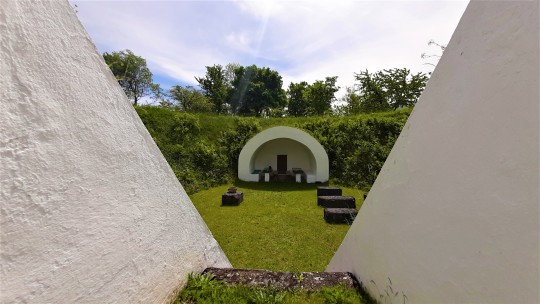
Der Tempel der Zapoteken
‚The Pit‘ ist ein Projekt, das seinen Anfang in den frühen Neunzehnsiebzigern nahm. „Der Keller hat mich gefunden. Ich habe ihn sofort gekauft, Garten und Steinbruch inklusive. Seit damals arbeite ich hier. Ich führe einen jahrzehntelangen Dialog mit der Landschaft. Entscheidend sind die Materialien: Sandstein und Beton. Irgendwann sehen ihre Oberflächen gleich aus, mit der Natur aber kontrastieren sie.“ Ich blicke mich um. Die eine Steilwand ist übersät mit unzähligen blauen Blumensternen, die andere ist gebuscht. „Zufall. Ich belasse die Natur, wie sie ist. Sie hat dasselbe Recht wie ich. Ich stelle Kunstwerke auf, sie antwortet darauf. Das finde ich spannend.“ In dem Garten, der kein Garten ist, sondern ein Park, eigentlich Wald, stehen Kunstwerke von Pichler, Bugaev Afrika und Noever. Sie existieren nebeneinander, ohne dass das eine das andere bevormundet. Man muss sich ihnen über Wiesen, vorbei an Spiraea-Büschen, durch dichtes Blattwerk und schmalen Waldwegen nähern. „Die Büsche markieren die Grenze. Habe damals ein bisschen zu viel gesetzt. Das Grundstück wird dadurch kleiner“, lacht er, „Ich weiß längst nicht mehr wo es beginnt und wo es zu Ende ist. Ist auch nicht wichtig.“ Das riesige Stück Natur ist selbst zum Kunstwerk geworden. „Dort drüben…!“ Wir schlagen uns durchs Unterholz, überqueren den Steinbruch und stoßen auf eine Wiese die sich als ein Kosmos tausender flatternder, hauchzarter Geschöpfe entpuppt. „Lepidopterologen der Universität Wien forschen hier. Ich hatte keine Ahnung von der Existenz der Schmetterlinge. Einmal kam ein Gelehrter vorbei, fotografierte und krakelte Aufzeichnungen in ein Buch. Seither liegen hier Sommer für Sommer Studenten im Gras und beobachten die kleinen Geschöpfe. Die Schmetterlinge finden hier ideale Lebensbedingungen vor. Ein weiteres Kunstwerk. Aber ein lebendiges.“
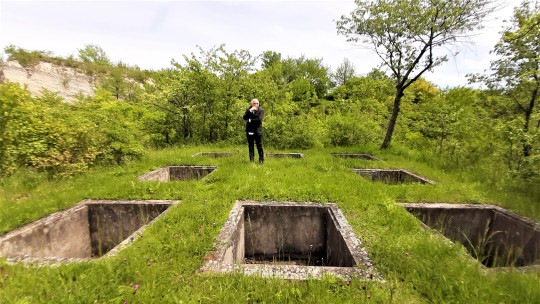
Sitzgruben, Walter Pichler
Wir streifen durch mannshohes Gras und stehen vor einem Betonquader, in den an einer Seite eine schmale, hohe Türe geschnitten ist. Das Kunstwerk sieht aus wie einer der Zapoteken-Tempel im mexikanischen Monte Albán. „Ich bin fasziniert von der Atzeken-Kultur“, sagt Noever, „Relikte außergalaktischer Lebens auf unserem Planeten haben mich immer schon fasziniert. Erich von Däniken. Erinnern Sie sich?“ Er öffnet die Türe des raumschiffartigen Gebäudes - ich erwarte eine geheime, nachgebaute Kultstätte. Menschenopfer? Der Meister wendet sich um. „Meine Einstiegsarbeit. ‚Klosett mit Betonplateau‘, heißt sie. Der Beginn allen Lebens.“ Im Inneren der kleinen Festung befindet sich eine gemauerte Hochsitzbank, in die zwei runde Löcher geschnitten sind. Ein Doppel-Plumpsklo. Gegenüber der Besucher gibt ein flaches Fenster den Blick zu Noevers Hochzeitsbäumen frei. „Ein Geschenk. In zweihundert Jahren werden sich ihre Kronen vereinigt haben. Die Aussicht ist dann noch schöner.“
Der Weg führt den Steinbruch hinunter zu einem Kunstwerk von Walter Pichler. ‚Sitzgruben‘, nennt es sich. „Nehmen Sie Platz!“ Kaum ausgesprochen, verschwindet PN in einer der betonierten Gruben. Ich setze mich – und verschwinde ebenfalls unter der Erde. Mir gegenüber nehme ich zwischen Gräsern und Steinnelken, klein wie eine Hummel, den Kopf des Kunstphilosophen wahr. „Hier sind wir gesessen und haben tagelang gesprochen und getrunken. Die Natur war immer mit uns. Auch in uns“, ruft er mir zu, „Pichler war ein Freund. Seine Kunstwerke verblieben immer dort, wo sie gebaut wurden. Gelebt hat er von den Skizzen.“

Kunst für Budapest
Ortswechsel. In einer der schroffen Steinbruchwände erkenne ich die Umrisse zweier Figuren: ‚Muttergottes mit Kind‘. „Keine Ahnung, wie die zu mir kam. Wahrscheinlich hat sie einer der Arbeiter in den Stein geritzt“, brummt er. Manchmal fällt einem ein Werk auch in den Schoß. Kunst und Leben. Dann gehen wir zurück, vorbei an sechsunddreißig, in Form eines Rechtecks positionierten ‚Betonkuben‘, die Noever einst für eine Freiluftausstellung in Budapest gegossen hat, wobei der Transport hin- und zurück mit zum Kunstwerk gehörte.
Durch die ‚Flügeltreppen‘ steige ich zum ‚Steinbruchgang‘ hinunter, durch den wir zu Beginn der kleinen Exkursion in den Wald hinaustraten. Die schnurgerade und mit Gras bewachsene ‚Nadel‘ teilt den Garten wie einer der Pfeile, die Domenigs Steinhaus am Ossiacher See durchdringen. „Günter war ein Unerbittlicher, ein Strenger. Einer meiner liebenswertesten Freunde.“

Flügeltreppen
Ich nehme an dem Steintisch vor dem Keller Platz. Kalter Weißwein steht wie von Zauberhand da, dazu ein paar Sandwichs. „Habe ich aus Wien mitgebracht. Ich bin kein Koch.“ Ich frage, wie der Ort, das Land, zu dieser, seiner Lebensarbeit steht. „Einerseits, andererseits“, sagt er, „Einerseits ist alles hier unter Denkmalschutz gestellt. Auch Sie, als Besucher. Für die Dauer Ihrer Anwesenheit sind Sie Teil eines Gesamtkunstwerkes. Da sich ‚Die Grube‘ aber um ein ‚work in progress‘ handelt, verändert sie sich. Sie werden bald gehen, die Steine verwittern, die Lebenserwartung der Schmetterlinge zählt kaum mehr ein paar Wochen, die Baumkronen schmiegen sich erst in vielen Jahren ineinander, die Blumen verblühen, die Monumente sind dem Verfall ausgesetzt. Die Veränderung ist ein einberechneter Faktor. Der gegenwärtige Zustand kann nicht gehalten werden – soll auch nicht. Andererseits untersagt mir die Gemeinde neue Kunstwerke zu errichten. Die Pläne liegen seit Jahren vor, aber ich darf nicht bauen. Man schützt die bestehende Kunst, akzeptiert die Veränderung, untersagt ihr aber zu wachsen. Als ob man dem Maler verbietet, zu malen. Um nicht zu verzweifeln nehme ich sogar diese absurde Intervention der Bürokratie als eine, wenn auch höchst provokante Kunstaktion wahr. Folgerichtig, wenn auch in sich fragwürdig.“ Peter Noever sieht mich aus müden Augen an. Der Kunstphilosoph führt hier, inmitten seines Kunstparks einen großartigen Dialog mit der ihn umgebenden Natur. Der mit der Gemeinde ist ungleich schwerer.
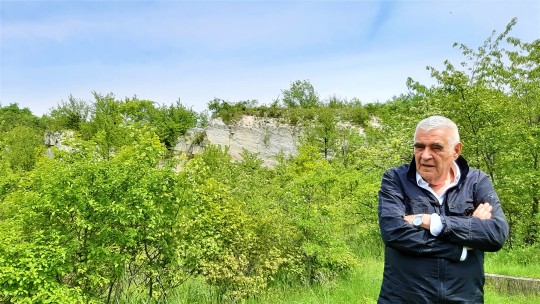
Der Steinbrecher
„Kommen Sie wieder!“, sagt er, als ich auf die kleine, verschwiegene Kellergasse hinaustrete. „Gerne“, sage ich. Der große, alte Mann, der zusieht wie sich Bäume vereinen, wie Steine zu Worte werden, und wie Schmetterlinge um ihr Leben tanzen, wartet auf das Paradoxon, dass Kunst begriffen wird. Er blickt mir nach, während ich mich auf meine Vespa setze, dann wendet er sich entschlossen ab, um sich gleich darauf nochmal um die eigene Achse zu drehen und mir zuzuwinken. Ist er einer der tanzenden Geliebten des Sufi-Dichters Dschalāl ad-Dīn Muhammad Rūmī, der mit seiner Poesie und Weisheit der Welt so manches Lied sang, so manches Mal auf der Nase herumtanzte? Vielleicht ist er ja auch einer ihrer Nachfahren - ohne sich dessen bewusst zu sein. Vielleicht ist er einer jener Philosophen, die ein Leben lang einen Schmetterlingstanz um ihre Gedanken vollziehen. ‚Wer nicht schmeckt, der weiß nicht‘, sagte einst Rumi. Peter Noever hat in seinem Leben viel probiert, viel geschmeckt. Er weiß. Er wird den Ausweg aus dem ewigen Kreislauf des Unverständnisses finden. Ich bin mir dessen sicher.

Die Nadel
Ich verlasse diesen schönen, ruhigen, um sich selbst wirbelnden Ort. Ein Ort, in dem die Gedanken nicht zur Ruhe kommen wie ewig tanzende Derwische in der Tiefe orientalischer Mystik.
#Michael Schottenberg#Schotti#Schotti to go#Schotti unterwegs#Schotti unterwegs im Burgenland#Breitenbrunn#Kunst#Architektur#Peter Noevers#Peter Noevers Land Art Project#The Pit#Die Grube#The Pit/Die Grube#Walter Pichler#Derwisch#Der fliegende Derwisch#Tempel der Zapoteken#Erdplatz#Steinbruchgang#Die Nadel#Burgenland#Österreich
4 notes
·
View notes
Photo
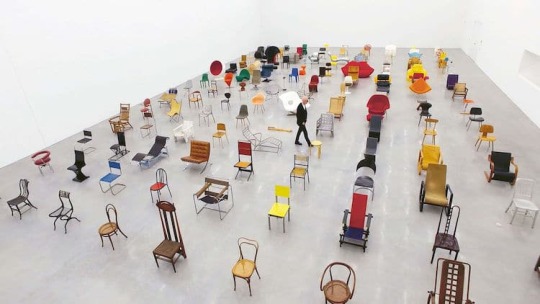
Chair Times. Una silla, una época: de 1800 hasta hoy
#Amelie Klein#Antonio Citterio#Arthur Rüegg#David Chipperfield#David Chipperfield Architects#diseño de mobiliario#diseño industrial#documental#Hella Jongerius#Jochen Eisenbrand#Mateo Kries#Peter Noever#Rolf Fehlbaum#Ronan Bouroullec#Ruggero Tropeano#Serge Mauduit#silla#vitra#Vitra Design Museum
10 notes
·
View notes
Text
Dagobert Peche
At Commune, each of us has a shared title: designer. We gather ourselves from many different backgrounds, though we’re here to create together. This means we often find ourselves facing unfamiliar avenues�� and down them we charge. It’s not a surprise then, that we tend to be immensely inspired by those whose creative endeavors embrace more than one concentration. Dagobert Peche is one of these people.
Born in Vienna at the end of the 19th century, he came of age during a particularly experimental time and place. It was the foundational period of the Wiener Werkstatte; Peche was working alongside two of its giants: Wagner & Hoffmann. Though he practiced as an architect initially, Peche eventually began to produce decorative arts. His creative world seemed to explode from there. Metals, ceramics, textiles, furniture, and paintings all exuded from his creative force, and were crafted with a remarkable adherence to the technicalities of his architectural training.
We’re slightly obsessed with all that he produced and are sharing images here that we’ve collected from two sources: “Dagobert Peche und die Wiener Werkstatte” by Peter Noever and the always incredible Metropolitan Museum Archive.
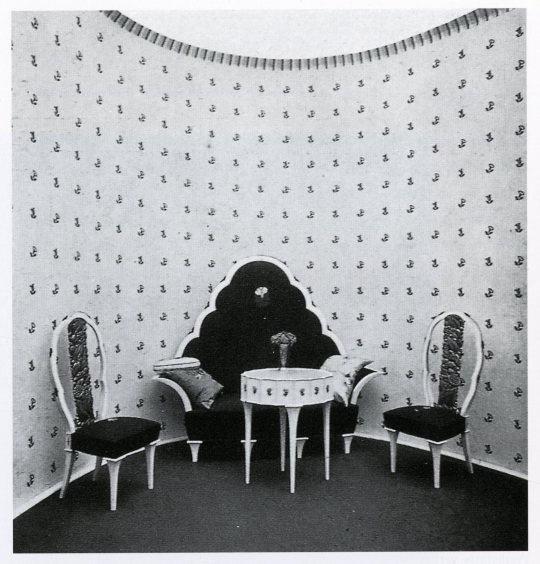
Image courtesy of Peter Noever, Dagobert Peche und die Wiener Werkstatte, Hatje, 1998.
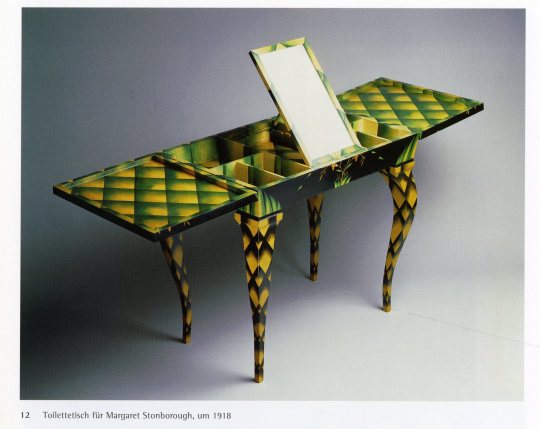
Image courtesy of Peter Noever, Dagobert Peche und die Wiener Werkstatte, Hatje, 1998.

Image courtesy of Peter Noever, Dagobert Peche und die Wiener Werkstatte, Hatje, 1998.

Image courtesy of Peter Noever, Dagobert Peche und die Wiener Werkstatte, Hatje, 1998.

Image courtesy of Peter Noever, Dagobert Peche und die Wiener Werkstatte, Hatje, 1998.

Image courtesy of Peter Noever, Dagobert Peche und die Wiener Werkstatte, Hatje, 1998.
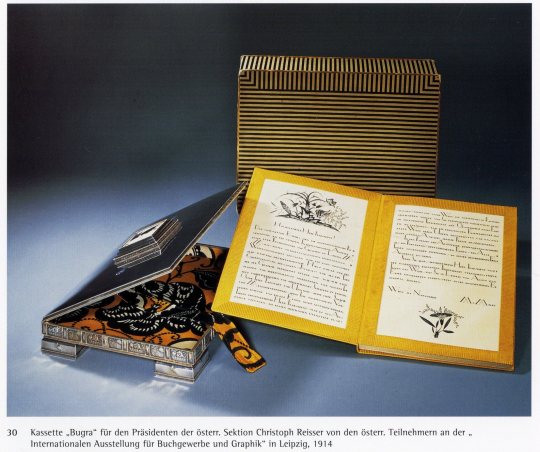
Image courtesy of Peter Noever, Dagobert Peche und die Wiener Werkstatte, Hatje, 1998.

Image courtesy of Peter Noever, Dagobert Peche und die Wiener Werkstatte, Hatje, 1998.

Image courtesy of Peter Noever, Dagobert Peche und die Wiener Werkstatte, Hatje, 1998.

Image courtesy of Peter Noever, Dagobert Peche und die Wiener Werkstatte, Hatje, 1998.

Image courtesy of Peter Noever, Dagobert Peche und die Wiener Werkstatte, Hatje, 1998.

Image courtesy of Peter Noever, Dagobert Peche und die Wiener Werkstatte, Hatje, 1998.
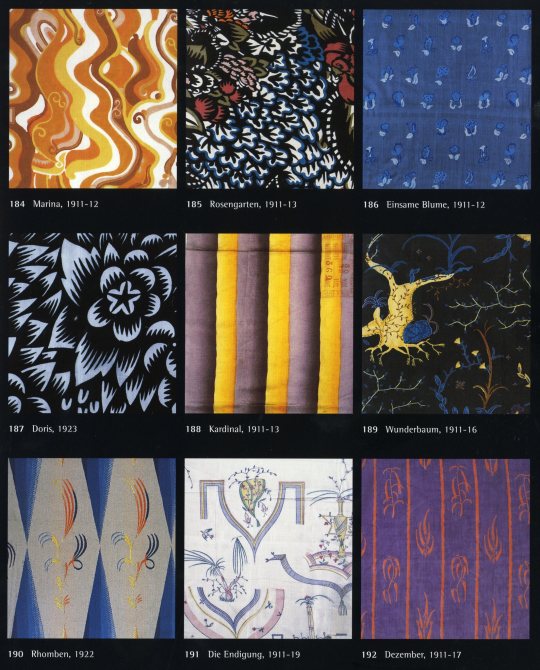
Image courtesy of Peter Noever, Dagobert Peche und die Wiener Werkstatte, Hatje, 1998.
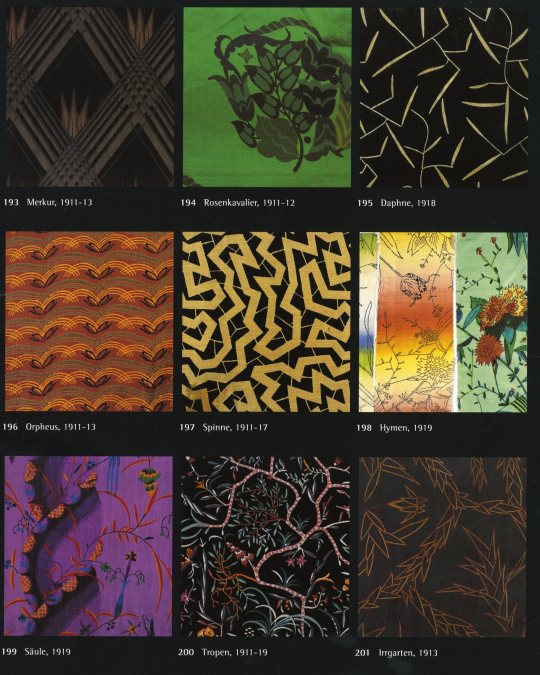
Image courtesy of Peter Noever, Dagobert Peche und die Wiener Werkstatte, Hatje, 1998.

Image courtesy of Peter Noever, Dagobert Peche und die Wiener Werkstatte, Hatje, 1998.

Image courtesy of Peter Noever, Dagobert Peche und die Wiener Werkstatte, Hatje, 1998.
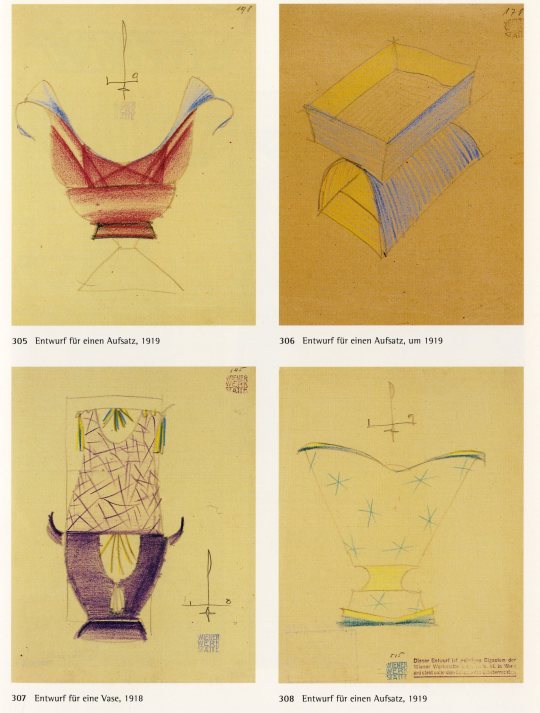
Image courtesy of Peter Noever, Dagobert Peche und die Wiener Werkstatte, Hatje, 1998.
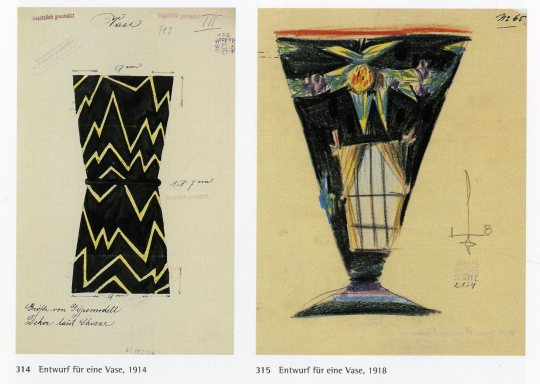
Image courtesy of Peter Noever, Dagobert Peche und die Wiener Werkstatte, Hatje, 1998.

Image courtesy of Peter Noever, Dagobert Peche und die Wiener Werkstatte, Hatje, 1998.

Dagobert Peche, Daphnis, 1922, Metropolitan Museum Archive

Dagobert Peche, Feather Duster, 1922, Metropolitan Museum Archive

Dagobert Peche, Nuance, 1922, Metropolitan Museum Archive
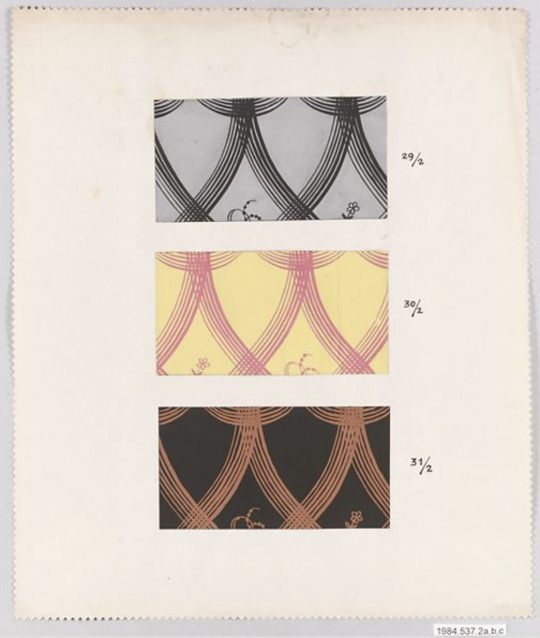
Dagobert Peche, Palatin, 1922, Metropolitan Museum Archive

Dagobert Peche, Palatin, 1922, Metropolitan Museum Archive

Dagobert Peche, Textile Sample circa 1902, Metropolitan Museum Archive
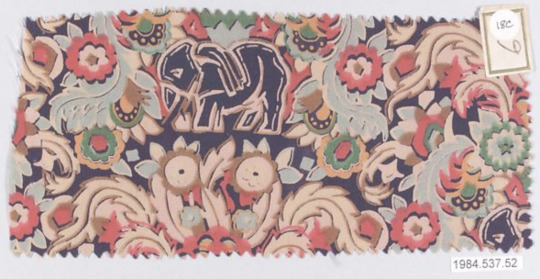
Dagobert Peche, Textile Sample circa 1920, Metropolitan Museum Archive

Dagobert Peche, The Rose (Die Rose), 1922, Metropolitan Museum Archive
#communedesign#communedaily#dagobertpeche#wiener werkstätte#designer#architect#decorativearts#vienna#19thcentury#otto wagner#josef hoffmann#peter noever#metropolitan museum of art
38 notes
·
View notes
Text
In Vino Veritas Biennale Style!
It was the Vernissage days at the 2014 Biennale, and for me those of the Vernissage are the most exciting days to visit the exhibition, more for the fact that you get to meet with old friends than for the presented works as because of the large number of people you can never experience it as you should. During the Vernissage one usually spends the morning and afternoon visiting the pavilions openings, meeting up with friends and of course having a lot of Aperol spritz. And evenings are usually reserved for the parties.
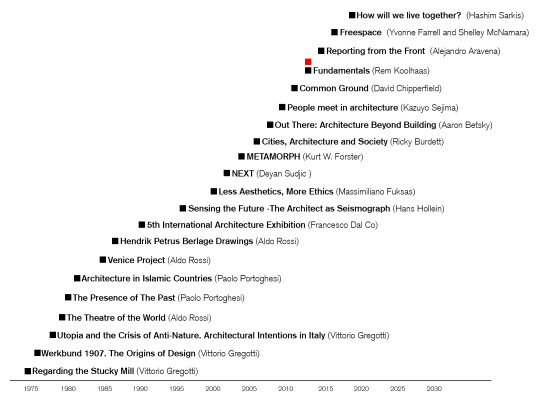
Read also “Teatro del Mondo: An Odyssey”
That was the second time that I was involved with the Kosovo National Pavilion as Commissioner on behalf of the Ministry of Culture after our first participation as Kosovo at the Biennale in 2012.
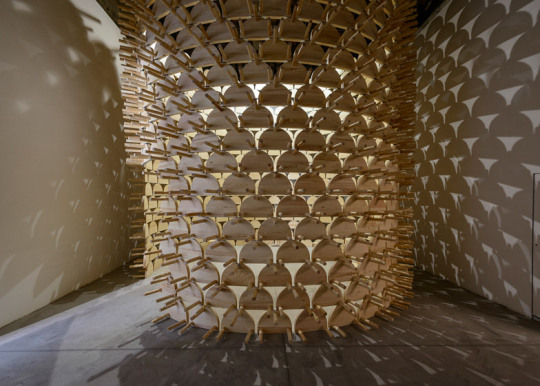
Kosovo National Pavilion in 2014 | Photo © Andrea Avezzu'
On the second night of the Vernissage I was supposed to go to the Turkish party, which was organized by Murat (Tabanlioglu) at one of the Venetian islands, but during the day I met up with two close friends Winy (Maas) and Jan (Knikker) from MVRDV who invited me to a somewhat private dinner at a restaurant nearby San Marco Square. “You have to come and you'll going to love it, but it’s a strictly personal invitation”, Jan told me.
It was a bit difficult to reach the place as my phone battery was very low and I was trying to find it without using Google Maps. I finally did find it and, although I thought I was late, apparently most of the guests also got lost and everyone was showing up at around the same time.
So I entered this room that was not larger than 4x4 meters, with a large table in the middle and people sitting around it, and a second row of chairs behind them. I set at one of the chairs close to Jan and could identify some of the people sitting at the large table. Apparently Winy was the moderator of this “debate” and the other people attending were Aaron Betsky, Patrik Schumacher, François Roche & Peter Noever. Anyhow, before the debate started, a gentleman, that I later learned was Robert White, welcomed everyone to the second night of the "Dark Side Club" talks and asked for drinks to be served.
After drinks were poured and Winy made his short opening speech, which was supposed to set the tone of the debate, each participant around the table had his own turn to talk about the curators’ work. I'm not sure if it was the drinks, the late hours or the intimacy of the place, or maybe all of them, but all of the participants around the table took their terms at criticizing Rem (Koolhaas). Everything went on smoothly, with all participants jabbing Rem and telling architecture jokes, but the mood suddenly changed after Patrik (Schumacher) declared that the curated work was brilliant and that the future of architecture was parametric!
This was the moment the "architecture roast" started and the gloves were off! Roche, Noever, and Betsky were all yelling at Patrik. I must say that after few minutes I felt bad for Patrik being called a narcissist, childish, a preacher, etc., and at one point was thinking of standing up and screaming he “knows that parametricism is just a tool" but I think he was enjoying the fact that the debate focused on him and also Betsky anticipated me by telling Patrik that he doesn’t like using offensive words but he felt the need to say to him to "F..k off". After that he stood up and left the table!
Patrik defense of his view and others’ criticism continued until the end of the debate which apparently lasted for another 2 hours although to me it seemed much shorter than that.
I must say that this was the most fun I had in a Biennale-related event and I was told that these kinds of matchups of participants take place on purpose so the debates are always super interesting. This provided me with the incentive to do something similar back home at the Kosovo Architecture Festival, which involved those Future Architecture young creatives we invited to the event.
Probably because of the young age of our participants “Debates over Beers" were not that serious and they ended up with the young fellows imitating "starchitects" and raising philosophical questions on the meaning of life and why one should become an architect, with the latter definitely being the result of drinking too much beer!
I'm really sorry that just minutes into the Venice “Dark Side Club” debate my cell phone died and couldn’t take any photo to show. All I can add is that I did ask everybody in the room to lend me their power bank to recharge my phone but no one was willing to do it!
There is a link at uncube magazine blog on the DSC I participated at.
***
VAB 01: Bekim Ramku

Bekim Ramku is an architect, urban designer,curatorand criticbased in Kosovo. Apart from running Kosovo Architecture Foundation (KAF) and Prishtina Architecture Week (PAW) Bekim heads an Office of Urban Design+Architecture a multidisciplinary practice based in Prishtina. He received his Architecture Engineering Diploma from Prishtina University and his Masters in Housing and Urbanism from the AA School of Architecture in London. He also served as a Research Fellow at MIT’s Department of Urban & Spatial Planning in Cambridge, USA. Bekim is the founding chair of the DoCoMoMo National Chapter in Kosovo and founding member of the Future Architecture Platform.
He serves as a consultant and expert for European and Global agencies and initiatives, as an independent expert for the Mies Van der Rohe Awards, as an international expert for Bloomberg’s “Global Designing Cities Initiative”, and as an Architecture and Planning Consultant for the World Bank GSURR. Previously, he served as the Curatorial Advisor to Martino Stierli, the Philip Johnson Head Curator of Architecture and Design at the Museum of Modern Art in New York, and as the Commissioner to the Kosovo Pavilion at the Venice Biennale Architecture Exhibition in 2012 and 2014. Past three years he also served as an advisor to the Kosovo Minister of Culture.
1 note
·
View note
Photo

Image courtesy of Peter Noever, Dagobert Peche und die Wiener Werkstatte, Hatje, 1998.
#Dagobert Peche#perse#fashion#style#photography#film photography#art#artist#design#furniture#1920#german#1998#90s
55 notes
·
View notes
Link
In 2001, over the course of two-months, MAK in Vienna hosted a symposium entitled The Discursive Museum. The lectures and roundtable discussions were then published in a volume of the same name.
In his opening remarks, curator and editor Peter Noever outlines the symposium’s concerns: “art is vanishing” (2001, 7); it is becoming less and less materialized. And even if there are works, they are less and less destined for museums and galleries. Temporality and ephemerality, it seems, are not compatible traits for the museum.
The goal of The Discursive Museum symposium, further, The Discursive Museum publication, was to critically address and re-evaluate the discourse of the museum in light of this “contemporary crisis” (as Noever terms it; 2001, 7). Put more generally, its goal was to critically address and re-evaluate the museum whose discourse no longer served the objects it was tasked to serve. For Noever, the empty MAK exhibition space (emptied for the duration of the symposium) was not insignificant. It set the stage so to speak of the current condition of art. In doing so, Noever, his fellow curators, theorists, and artists, created a discourse within an established discourse with the aim of critically examining it from within, which, was symbolically represented by the artless MAK walls originally tasked to house and exhibit art.
In focusing on a particular characteristic of contemporary art, Noever calls for museums to take on said characteristic as a museological practice. The character of the artwork, according to Noever, is both an “artwork” and a theoretician of “artworks.” In other words, art has become discursive. If the museum is to be of service to contemporary artworks, it must become the object of its own discourse, as the artwork is both “artwork” and the theoretician that theorizes itself as an “artwork.”
Noever, Peter, ed. The Discursive Museum. New York: Distributed Art Pub, 2001.
1 note
·
View note
Photo
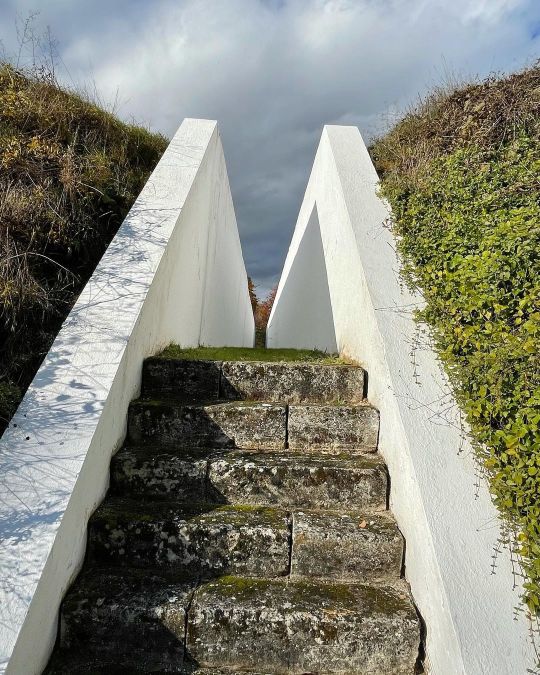
@noeverspace @architekturraumburgenland RAUMBURGENLAND Contemporary Architekturgalerie out ̅of the blueArt + Architecture Out There Eine Ausstellung von Peter Noever Vernissage/Premiere Eröffnung: 4. November 2021 | 19 Uhr Fr., 5. Nov. 08 -16 Uhr / Do., 11. Nov. 09 -21 Uhr Fr., 12. Nov. 08 -16 Uhr / Do., 18. Nov. 09 -21 Uhr Ausstellung: 5. November 2021 – 20. Mai 2022 Öffnungszeiten: Do.: 9 -21 Uhr / Fr.: 9-16 Uhr (Abweichungen aufgrund Covid-Verordnung möglich): Fanny-Elßler-Gasse 4, 7000 Eisenstadt https://architekturraumburgenland.at/veranstaltungen/ausstellung-out-of-the-blue-die-grube-the-pit https://www.instagram.com/p/CV21FJBMSXd/?utm_medium=tumblr
0 notes
Photo
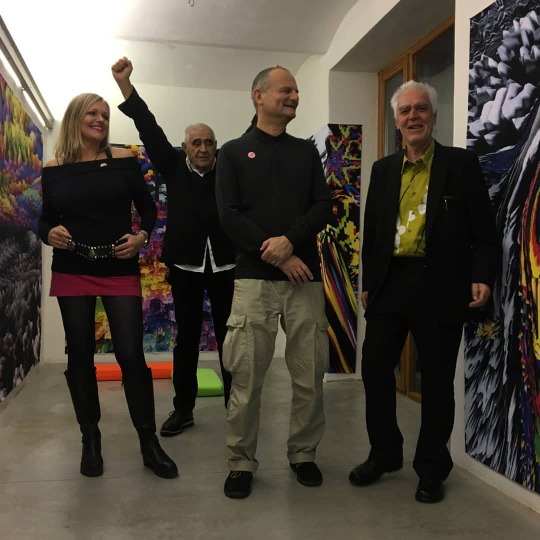
Opening of our solo-show 'It's True, it's GUNafa' with Peter Noever & Georg Driendl @viennaartweek , E #stationrose #digitalart #electronica #contemporaryartists #vienna #driendlarchitects #peternoever #viennaartweek #virtualreality #htcvive #augmentedreality @artiviveapp https://www.instagram.com/p/B5tON_qlMDo/?igshid=15u4pvn6degfd
#stationrose#digitalart#electronica#contemporaryartists#vienna#driendlarchitects#peternoever#viennaartweek#virtualreality#htcvive#augmentedreality
0 notes
Photo

I first saw this picture of webs woven by spiders under various drugs in 2005 (I was always especially impressed with caffeine). Since then, every few years, it is brought back again and again by news or social networks, the source of the original research is stated as something strange like NASA secret laboratories or German military scientists. Therefore, before posting it to this channel, I finally decided to investigate its origin.
The link from the Wikipedia article points to the publication "Using Spider-Web Patterns To Determine Toxicity" in NASA Tech Briefs 1995. According to a record in the NASA technical reports database, the source report (with the authorship of three people from NASA Marshall Space Flight Center) is dated by 1st of April, 1995, which is somewhat suspicious. I quickly checked the bios of all three authors, and they are quite different: David Noever founded some electronic document management company, Rachna A. Relwan became an endocrinologist in Atlanta, and Raymond Cronise remains pretty public scientist now. I found him on Twitter and asked if this was an April Fool's hoax. He replied that the work was indeed real, and gave several references to his related works of the time. Their essence, as far as I understood, is in the calculation of quantitative macro indicators of porous structures, which characterize these structures in a certain way (for example, the structures of polyurethane foam obtained under different gravitational conditions are compared). Obviously, at some point, the authors decided to apply the same approach to the structure of webs, woven by spiders under the influence of various drugs. How did that happen?
It turns out that this very NASA Marshall Center played a big role in a series of Skylab experiments, in which the effects of weightlessness on various natural processes were studied. In particular, among the experiments were spiders launched into orbit at the Skylab 2 station, and their webs were later analyzed by scientists, including Dr. Peter Witt. An American citizen since 1962, he was born and raised in Germany, survived the war as a medical student in Berlin, and then fled from East Germany to West. In 1948, he worked as an assistant at the Department of Pharmacology at the University of Tübingen, Germany. His university colleagues tried to photograph the weaving of a spider's web, the activity of which fell on a very early morning, which was inconvenient. The gloomy German genius brought them to Peter, who worked in the department of pharmacology so that he would drug a spider with some kind of crap and move the cycle of its activity. The results (in the form of a strange web) surprised scientists a lot, and Peter has devoted all his life to this activity, using web analysis as a way to study the state of the spider's nervous system. In total, he wrote on this topic 100+ scientific papers and some books. On his personal memorial site, www.drpeterwitt.com, supported by his two daughters, one can find many of his articles and a bunch of photos of webs obtained in various conditions. Apparently, the picture above goes back to these photos.
Well, and if you are bored, you can read how scientists drug some invertebrates with weed (mostly worms and crustaceans).
0 notes
Photo

Sketch for the upcoming exhibition "Declared", curated by Peter Noever and Andrea Lenardin. #robots #glassblowing #sketch #process #emergence #sketchbook #andrealenardinmadden #peternoever (at Detroit, Michigan) https://www.instagram.com/p/BsT-qEehlt3/?utm_source=ig_tumblr_share&igshid=i4ri84e1m5xp
0 notes
Text
El plan de Austria para saciar la prohibición de fumar requiere una llamada a la salud
Nueva Noticia publicada en https://noticiasq.com/el-plan-de-austria-para-saciar-la-prohibicion-de-fumar-requiere-una-llamada-a-la-salud/
El plan de Austria para saciar la prohibición de fumar requiere una llamada a la salud

Muchos países occidentales han prohibido fumar en bares y restaurantes, pero Austria está resistiendo la tendencia. Según una ley aprobada en 2015, Austria debería haber introducido una prohibición total en mayo, pero ahora su nuevo gobierno conservador y el partido de extrema derecha han demolido los planes. El movimiento fue liderado por el líder del Partido de la Libertad, el vicecanciller austríaco Heinz-Christian Strache, fumador, quien dijo en el parlamento el mes pasado que era libertad de elección. Deben ser libres de decidir si quieren tener secciones para fumadores, donde "un ciudadano tenga la oportunidad de decidir tal vez disfrutar de un cigarrillo o una pipa o un cigarro con café". El movimiento conmocionó al establecimiento médico austriaco. El dott. Manfred Neuberger, profesor emérito de la Universidad Médica de Viena, dice que es "un desastre para la salud pública". "La decisión es irresponsable: fue una victoria para la industria tabacalera: el nuevo gobierno ha transformado a Austria en el cenicero de Europa".
Dr. Neuberger afirma que Austria ya tiene índices de fumadores "vergonzosamente altos" entre los jóvenes, "particularmente en comparación con otros países de altos ingresos". Una encuesta de 26 países realizada por la Organización para la Cooperación y el Desarrollo Económico (OCDE) en 2013 dijo que Austria tenía la prevalencia más alta de fumadores de niños de 15 años, una posición que celebrada desde 1994. Ahora la Cámara Médica de Viena y la Agencia de Ayuda contra el Cáncer de Austria están lanzando una petición pidiendo al gobierno que reconsidere. El dott. Thomas Szekeres, jefe de la Cámara de Médicos de Austria y Austria, dice que "no entiendo por qué el gobierno quiere dar un paso atrás y permitir fumar". Para saber más "Sabemos que fumar causa ataques cardíacos severos, cáncer y sabemos que en los países donde no se permite fumar en restaurantes y bares, los empleados están protegidos y toda la población parece estar más sana. "Muchos de los famosos cafés en el centro de Viena ya han pasado sin humo, en parte en planes para una prohibición y en parte debido al turismo. Pero los otros siguen humeantes. Los grandes restaurantes deben contar con áreas separadas para fumadores y no fumadores, pero las reglas para mantener las puertas cerradas entre los dos espacios son ignoradas. Los pequeños establecimientos pueden elegir fumar o fumar. En el Kleines Café, cada mesa con tapa de mármol tiene un cenicero y el aire es azul con humo de tabaco. Peter Noever, uno de los invitados, dice que Viena tiene la costumbre de retroceder en el tiempo. "Los vieneses creen que son algo súper especial y fumar es una parte muy fuerte de la cultura.
" Fui un fumador empedernido, pero no fumaba durante 15 años o más. Fumaba mucho, ya no puedo fumar. Pero me gustan los fumadores, son más humanos. "Derramado por el humo" Peter Dobcak de la Cámara de Comercio de Viena dice que está a favor de anular la prohibición, aunque admite que hay divisiones entre los dueños de los restaurantes ". Tenemos muchos restaurantes que prefieren fumar invitados "El negocio del restaurante de nivel superior está a favor de la prohibición y los bares, clubes y clubes son en su mayoría a favor de fumar porque la ley obliga a las personas a fumar y luego c & # 39, es el ruido … a altas horas de la noche ". El Café Hummel, en el octavo distrito burgués de Viena, fue sin humo hace un año. Su propietaria, Christina Hummel, afirma que su negocio ha disminuido en un 5% después de prohibir los cigarrillos. Pero ella dice que se está enfocando en nuevos clientes más jóvenes. "Vemos, en el lado positivo, que muchas familias vienen a visitarnos para desayunar con sus hijos". Tenemos el gran desafío de cambiar nuestro concepto de negocio. "
Las opiniones entre sus invitados eran mixtas". Gerhard Lammerer, un no esmoquin regular, dijo que estaba en contra de la prohibición. "La gente siempre fumará, ¿por qué no dejamos las cosas como están? Porque deberíamos hacer las cosas ¿Más rígido y prohibirlos? "En el pasado, las personas fumaban los cigarrillos más fuertes hasta 90." Pero otros no están de acuerdo. "Creo que la prohibición de fumar es lo correcto", dijo Christoph Riemekasten. "El aire es mejor, en otros países no hay ningún problema con la prohibición de fumar, solo en Austria".
Leo Lukas, un artista de cabaret, fue un acuerdo. Él dice que puede respirar. "Fui fumador por más de 30 años, y todavía hay noches en que fumo". Pero estoy absolutamente en favor de los bens, porque la calidad de vida es mucho mejor, incluso en un café tradicional como este. Me encanta Es realmente mejor "
Puedes leer el articulo completo (en ingles) Aquí
0 notes
Text
Schotti to go – Burgenland für Entdecker
Das Buch zur Sendung
Das Burgenland ist 100! Man glaubt’s ja nicht. Was in Menschenjahren unerreichbar erscheint, ist für ein Land nicht der Rede wert. Die junge Dame aus den ‚Golden Twenties‘ ist ein kulturelles Springinkerl und der Mittelpunkt der Welt: Österreicher, Kroaten, Ungarn, Romas – ihr Schicksal ist mit dem kleinen, oberhalb, unterhalb und rund um den See liegenden Land eng verknüpft. Ich möchte die Geschichten der Menschen erzählen, denen das Burgenland Heimat ist. Was bewegt sie, was essen sie, was denken sie und, das vor allem, worüber lachen sie.


Mit meiner roten Vespa brause ich von Kittsee bis zum Csaterberg, von Stinatz bis Andau, mache Halt auf Burgen und Kulturbühnen, in Stadtschlaining wie in Bildein. Der ethnischen Vielfalt und einzigartigen Kultur der Region begegne ich in Gesprächen mit außergewöhnlichen Menschen, wie dem Grabinschriftenjäger von Eisenstadt, ich staune über die grenzenlose Schönheit des Naturparks Raab im Drei-Ländereck Slowenien – Ungarn - Österreich, ich besuche den Gedenkort Kreuzstadl in Rechnitz oder das Auswanderermuseum in Güssing, und ich bin zu Gast beim Ausnahmekünstler Peter Noever und dessen Land Art Project ‚Die Grube / The Pit‘ in Breitenbrunn.
Entstanden ist ein humorvolles, geistreiches Buch für Entdecker – und ein Geburtstagsgeschenk der besonderen Art für ein besonderes Land.
#Michael Schottenberg#Schotti#Schotti to go#Schotti untwewegs#Burgenland für Entdecker#Burgenland#Buch#Amalthea Verlag
1 note
·
View note
Text
Wiener Wallpaper
Dagobert Peche was one of the most influential designers working in Europe in the 1910s and 20s. In 1910, after meeting influential Austrian designer Josef Hoffmann, Peche began contributing numerous designs for textiles and wallpapers to the Wiener Werkstätte, the design workshop founded by Hoffmann and Koloman Moser in 1903. Impressed by his work, Hoffmann brought Peche on as artistic director of the Wiener Werkstatte, in 1915. From then until his death from a malignant tumor in 1923, Peche produced an enormous and highly-varied output of designs for media including metalwork, textiles, graphic design, wallpaper, furniture, ceramics, and jewelry. Almost every object produced by the workshop during this time was either made from or influenced by Peche’s designs.
Peche’s skill and fame as a patternmaker meant his designs for textiles and wallpapers were particularly successful. He produced about 45 patterns for the Werkstätte and numerous more for other manufacturers. This particular wallpaper, Claudia, was one of 25 designs created by Peche and the Werkstatte in 1920 for the Swiss manufacturer Flammersheim & Steinmann.(1) Other examples in the collection from this line include Lace and Daphnis. Most of these designs were produced in multiple colorways, and examples of Claudia exist in color schemes of black-and-gold and blue-and-gold, as in this fragment from the Art Institute of Chicago.
This wallpaper is a perfect example of Peche’s distinctive style, characterized by a love of pattern, stylized natural motifs, including distinctive blade-like leaf and petal forms, and an interest in historical styles like the Rococo and Baroque. The titles of many of the designs in this line, including Cythera, Daphnis, Chloe, Narcyssus, and, of course, Claudia, point also to a distinct classicizing influence, seen in this paper in the use of grape and palmette motifs. The vertical stripes in the background, often seen in his wallpapers, also demonstrate the influence of the 19th-century Biedermeier style. Peche’s ability to meld the historic and the modern was a major contributor to his success. In a career that lasted a little over a decade, Peche stood out as one of the most original and well-regarded wallpaper designers of his time.
(1) Angela Völker, “Patterns and Colors: Peche’s Designs for Textiles and Wallpapers,” in Dagobert Peche and the Wiener Werkstätte, ed. Peter Noever (New Haven, CT: Yale University Press, 2002), 127-132.
Image source:
Dagobert Peche (designer), F.O. Schmidt (manufacturer), Wiener Werkstätte (producer), Claudia (Wallpaper Sample), 1923, ink, on paper; screen printed, 18.9 x 55.9 cm ( 7 7/16 x 22 in.), Art Institute of Chicago, 1991.83.259
from Cooper Hewitt, Smithsonian Design Museum http://ift.tt/2l0kwPZ
via IFTTT
4 notes
·
View notes
Text
Austria's plan to stub out smoking ban prompts health plea
Visit Now - http://zeroviral.com/austrias-plan-to-stub-out-smoking-ban-prompts-health-plea/
Austria's plan to stub out smoking ban prompts health plea
Image copyright
Getty Images
Image caption
A total smoking ban was due in May but the new government has scrapped the plans
Many Western countries have banned smoking in bars and restaurants, but Austria is bucking that trend.
Under a law passed in 2015, Austria was due to bring in a total ban this May, but now its new government of the conservatives and the far-right Freedom Party have scrapped the plans.
The move was spearheaded by the leader of the Freedom Party, Austria’s Vice Chancellor Heinz-Christian Strache, himself a smoker, who told parliament last month that it was about freedom of choice.
He said restaurants should be free to decide if they want to have smoking sections, where “a citizen has the possibility to decide perhaps to enjoy a cigarette or a pipe or a cigar with their coffee”.
The move has horrified Austria’s medical establishment. Dr Manfred Neuberger, professor emeritus at the Medical University of Vienna, says it is “a public health disaster”.
“The decision is irresponsible. It was a victory for the tobacco industry. The new government made Austria into the ashtray of Europe.”
Image caption
Many of the famous coffee houses in the centre of Vienna have already gone smoke-free
Dr Neuberger says Austria already has “shamefully high” smoking rates among young people, “particularly compared to other high income countries”.
A survey of 26 countries by the Organisation for Economic Co-operation and Development (OECD) in 2013 said Austria had the highest smoking prevalence of children aged 15, a position it held since 1994.
Now the Vienna Chamber of Physicians and Austrian Cancer Aid are launching a petition calling on the government to reconsider.
Dr Thomas Szekeres, the head of the Austrian and Vienna Chamber of Physicians, says they “don’t understand why the government wants to step back and allow smoking”.
Read more
“We know smoking causes severe heart attacks, cancer and we know that in countries where smoking is not allowed in restaurants and bars, employees are protected and the whole population turned out to be healthier.”
Many of the famous cafes in the centre of Vienna have already gone smoke-free, partly in anticipation of the plans for a ban, and partly because of tourism.
But others remain smoky.
Large restaurants have to provide separate smoking and non-smoking areas – but the rules on keeping doors closed between the two spaces are widely ignored. Small establishments can choose to be smoking or smoke-free.
At the Kleines Café, each marble-topped table has an ashtray and the air is blue with tobacco smoke.
Peter Noever, one of the guests there, says Vienna has a habit of turning back the clock.
“The Viennese believe that they are something super-special and smoking is a very strong part of culture.
Image caption
Peter Noever: “The Viennese believe that smoking… is a very strong part of culture”
“I was a heavy smoker, but I haven’t smoked for 15 years or more. I smoked so much, I can’t smoke any more. But I like smokers – they are more human.”
Split by the smoke
Peter Dobcak from the Vienna Chamber of Commerce says he is in favour of overturning the ban, although he admits there are splits among restaurant owners.
“We have a lot of restaurants who prefer to let the guests smoke.
“The higher level restaurant business is in favour of the ban. And the bars, the discos and the clubs are mostly in favour of smoking because the law forces people to smoke outside and then there is noise… late in the night.”
Café Hummel, in Vienna’s bourgeois eighth district, went smoke-free one year ago.
Its owner, Christina Hummel, says her business went down by about 5% after she banned cigarettes. But she says she is focusing on new, younger customers.
“We see, on the positive side, that more families are coming to visit us for breakfast with their children. We have the big challenge to change our business concept.”
Image caption
Cafe owner Christina Hummel says she is now focusing on new customers after banning cigarettes
Opinions among her guests were mixed. Gerhard Lammerer, a non-smoking regular, said he was against the ban.
“People will always smoke. Why don’t we leave things the way they are? Why should we make things stricter and forbid it? In the past people smoked the strongest cigarettes until they were 90.”
But others strongly disagree.
“I think the smoking ban is the right thing,” Christoph Riemekasten said. “The air is better. In other countries there’s no problem with a smoking ban, just in Austria.”
Image caption
Leo Lukas, a cabaret artist: “I’m absolutely pro-ban. The life quality is much better”
Leo Lukas, a cabaret artist, agreed. He says he can breathe.
“I was a smoker myself for over 30 years, and still there are some nights when I am smoking.
“But I’m absolutely pro-ban, because the life quality is much better – even in a traditional coffee house like this. I love it. It is really better.”
0 notes
Photo

Turrell, James. The other Horizon. Peter Noever (Hrsg.), Hatje Cantz Verlag, Ostfildern. 1999. Ausstellungskatalog MAK Wien #turrell #jamesturrell #kunstkiosk http://bit.ly/2xJZnEn
0 notes
Text
Today it is my absolute pleasure to welcome the lovely Anne Williams of Being Anne to Jen Med’s to help me spread a little more #booklove. We’ll be taking a look at all Anne’s bookish confessions, just as soon as we’ve learned a little more about Anne.
About Anne
When I first set up this blog, I really agonised over what to call it. I wanted it to be more than “just a book blog”, but I still need to work on that one. Maybe one day – but then again maybe not. I’m enjoying myself too much with the books.
My name is Anne (as you’ve probably guessed…) and I live in the beautiful market town of Wetherby in West Yorkshire. I haven’t always lived here though – I’m originally from a village near Bangor in North Wales, and still regularly visit family there. I worked as a civil servant (DWP) for more years than I care to remember, in my later years working in project and change management, and in marketing and communications.
But I’m now 61 years of age, and able to spend my time doing all the things I most enjoy: I was lucky enough to be able to take early retirement in March 2014.
My first passion has always been reading – I now enjoy spending much of my time doing just that, writing about books here on Being Anne, and discussing them with blogging and reading friends. I really enjoy doing a monthly book review slot on local community radio, Tempo FM in Wetherby, and also run the local U3A Book Group. I travel regularly to book related events – and am lucky to be invited to some of the best launches and parties!
You can follow Anne on her blog, and via Social Media
Being Anne | Twitter | Facebook
Childhood Sweetheart
Favourite book from childhood
In common with most other people, I really loved Enid Blyton. I was always a bit put off by the Famous Five though, because my namesake Anne was such a wimp – George was so much more fun. My favourite was The Adventurous Four. I see it’s now called The Adventurous Four Shipwrecked! (why, oh why?) and twins Jill and Mary have been renamed Pippa and Zoe…
First love
The first book you fell in love with
I moved on from children’s books pretty quickly really, and read anything I could lay my hands on. It’s a very long time ago, so I can’t really remember my first love – but I suspect it was probably something my mum wouldn’t have entirely approved of. I think it might have been Valley Of The Dolls by Jacqueline Susann – I see it was published when I was 11…!
Biggest book crush
The book character you’re totally in love with
Maybe I should probably mention Heathcliff or Mr Darcy, but it has to be Adam Hamilton-Shaw from Sheryl Browne’s Learning to Love. He has absolutely no sense of right or wrong where women are concerned, but I loved his hidden depths and sad back-story. And he’s absolutely gorgeous… certainly left me with a smile on my face…
Weirdest book crush
Well… duh
Prince, the black labrador in Matt Haig’s The Last Family in England. This book is still one of my all-time favourites, while Prince does all he can to help and protect his family while adhering to the Labrador Pact. I’ve never been able to look at a labrador since without wondering what they’re thinking… (If I hadn’t chosen Prince, it would have had to be Adam in Flowers for the Dead by Barbara Copperthwaite – and that would have been really weird!)
Hardest break up
The book you didn’t want to end
I think that has to be Sealskin by Su Bristow. It’s not a particularly big book, but it took me an absolute age to read – it’s so beautifully written, every word carefully chosen, and I just wanted to savour every moment. I was bereft when I finished…
The one that got away
The book in your TBR or wish list that you regret not having started yet.
Heavens, there are so many! But I think I must mention The Wacky Man by Lyn G Farrell. I’ve met Lyn several times and was totally fascinated (and very moved) to hear her talking about the harrowing background, but I think it’s a book I need to pick the right time to tackle. One day…
Secret love
Guilty Reading pleasure
Every so often, I do enjoy reading young adult books – just for the enjoyment, and I rarely review any on the blog. Favourites? I really enjoyed The Hunger Games (not me at all really!), but do have a particular soft spot for Michael Morpurgo and Sally Gardner. And I’m sure anyone would love the wonderful books by the late Siobhan Dowd as much as I do.
Love one, love them all
Favourite series or genre
I’m going to pick out a publisher, but even that’s a difficult choice! I think – because some of the others get more exposure – that I’ll go for Honno Welsh Women’s Press. They have an unerring eye for the most wonderful books and authors (Carol Lovekin, Thorne Moore, Juliet Greenwood, Judith Barrow… and so many others I’ve loved), handle them with care, and I’ve never read a book they’ve published that I haven’t thoroughly enjoyed.
Your latest squeeze
Favourite read of the last 12 months
It’s been an exceptional year for books, and it’s going to be so difficult to identify a list of books of the year, let alone spotlight just one. But I will single out Not Thomas by Sara Gethin, published by Honno. I really don’t usually like reading about the ugliness of this world – I prefer my books to be an escape – but this book was simply stunning. A world of cruelty and neglect written in the voice of a five year old child, seeing it all through his eyes and from his unique perspective – a book I’d unreservedly recommend to everyone.
Blind date for a friend
If you were to set a friend up with a blind date (book) which one would it be?
So many friends read crime and thrillers, and I’d like to introduce them to one I really enjoyed – Hostile Witness by Nell Peters. It takes a really special book to get me sprinting down the platform on arrival at Kings Cross to find a seat so I could read the last few pages. The body count has to be seen to be believed, but it’s also seriously funny – such a difficult balance to achieve. It’s a taut and tension-filled psychological thriller, but with a quite wonderful fresh and light approach of a kind I’ve honestly never seen before.
Greatest love of all
Favourite book of all time.
This is such a difficult question! Just so I’m not here all night, I’m going to plump for my favourite romantic novel of the last few years – Letters to the Lost by Iona Grey. We all read for different reasons, but one of the things I love is the way you can live inside a book for as long as you’re reading it, entirely leaving the real world behind – and when this book ended, I cried my eyes out because everything about it had been so thoroughly perfect.
Thanks Anne. Some absolutely brilliant choices in there. I don’t know if I ever read the advernturous four when I was younger. I was all Famous Five and Secret Seven. Strange as I hate odd numbers now 😀
I agree with you about Sealskin. Absolutely beautiful book. So unlike anything I’d normally read but I am so glad that I read it. And I really must move Flowers For the Dead up my tbr. Noever had you pegged as a Hunger Games junkie though…
What do you think folks? Agree with Anne’s choices? Do you have an other recommendations to add to Anne’s already huge TBR pile?
Make sure to join me on Friday when author Ann Girdharry shares all of her #booklove.
Have a fabulous day all
Jen
#BookLove: Anne Williams @Williams13Anne Today it is my absolute pleasure to welcome the lovely Anne Williams of Being Anne to Jen Med's to help me spread a little more #booklove.
0 notes